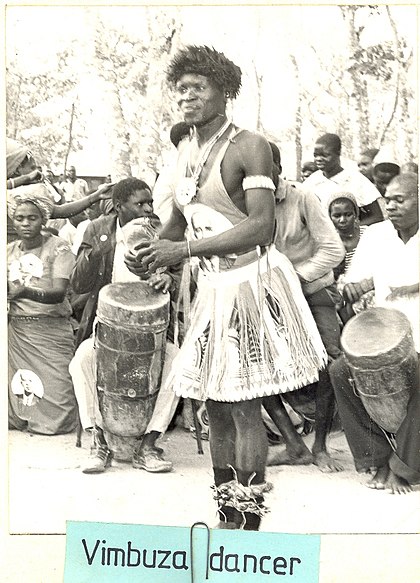Malawi
With over 80 traditional dances, Malawi is a country with diverse cultural beliefs and practices.These dances are performed on various occasions and for different reasons and are based on the beliefs of a particular tribe. For all the many tribes in Malawi, traditional dances are performed for a particular function or ceremony – for example during funerals, initiation ceremonies or harvest time. These are periods of unity, when families or villages come together, feast and resolve their differences. Some traditional dances are performed by everyone, while others are for particular people, based on their meaning and significance to the community.
The dances outlined above are some of the dances that influence the music of Malawi. Many of today’s popular urban artists are following the path of their traditions. A good example is rapper Tay Grin (real name Limbani Kalilani), who adopted his native Gule Wamkulu and fuses it with hip-hop to make his own sound. Local music and traditional dances seem to be going hand in hand, which is helping to preserve the magic and memories that these dances hold.
Source: https://www.musicinafrica.net/magazine/traditional-dances-malawi
List Of Dances
Vimbuza
Vimbuza is a healing dance popular among the Tumbuka people living in northern Malawi. It is an important manifestation of the ng’oma, a healing tradition found throughout Bantu-speaking Africa. Ng’oma, meaning “drums of affliction”, carries considerable historical depth and, despite various attempts over the years to suppress it, remains a fundamental part of indigenous healthcare systems.
Most patients are women who suffer from various forms of mental illness. They are treated for some weeks or months by renowned healers who run a temphiri, a village house where patients are accommodated. After being diagnosed, patients undergo a healing ritual. For this purpose, women and children of the village form a circle around the patient, who slowly enters into a trance, and sing
songs to call helping spirits. The only men taking part are those who beat spirit-specific drum rhythms and, in some cases, a male healer. Singing and drumming combine to create a powerful experience, providing a space for patients to “dance their disease”. Its continually expanding repertoire of songs and complex drumming, and the virtuosity of the dancing are all part of the rich
cultural heritage of the Tumbuka people.
The Vimbuza healing ritual goes back to the mid-nineteenth century, when it developed as a means of overcoming traumatic experiences of oppression, and it further developed as a healing dance under British occupation, although it was forbidden by Christian missionaries. By becoming possessed by Vimbuza spirits, people could express these mental problems in a way that was accepted and understood by the surrounding society. For the Tumbuka,Vimbuza has artistic value and a therapeutic function that complements other forms of medical treatment. Vimbuza is still practised in rural areas where the Tumbuku live, but it continues to face oppression by Christian churches and modern medicine.
Inscribed in 2008 on the Representative List of the Intangible Cultural Heritage of Humanity (originally proclaimed in 2005)
MALAWI
Region:
Northern Malawi
Ethnic group:
Tumbuka
Tchopa

Reference
UNESCO:
Tchopa is a performing art practised among Lhomwe communities in southern Malawi. The dance is usually performed during celebrations after good harvests and successful hunting, trips and during offerings to ancestral spirits after calamities such as droughts and outbreaks of disease.
Tchopa entails knowledge of particular dancing skills and singing, and employs three different sizes of drums. Twenty to thirty dancers perform in a circle
while criss-crossing each other. Some dancers carry packs on their backs holding farming tools, animal skins, puppets, hunting gear and old kitchen utensils. Each village headman has a small group of Tchopa dancers. Although primarily performed by older Lhomwe men and women, who function as the bearers and practitioners and principal custodians, Tchopa is now also increasingly performed by children. Knowledge and skills for the dance are transmitted during practice sessions and occasional performances. Other key roles among the group include the makers of dancing costumes and drums, drummers, whistlers and dancers.
Tchopa dance strengthens social cohesion among Lhomwe communities with members providing mutual support in times of need, such as during ill health and bereavement, and coming to the assistance of overburdened practitioners by providing communal labour in the field.
Inscribed in 2014 on the Representative List of the Intangible Cultural Heritage of Humanity
MALAWI
Region:
Southern Malawi
Ethnic group:
Lhomwe

